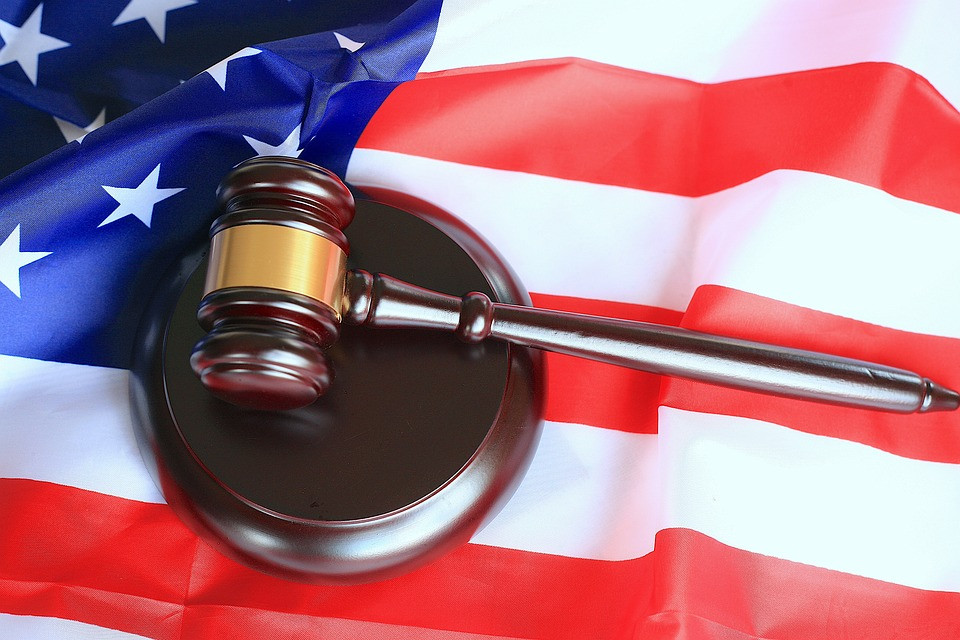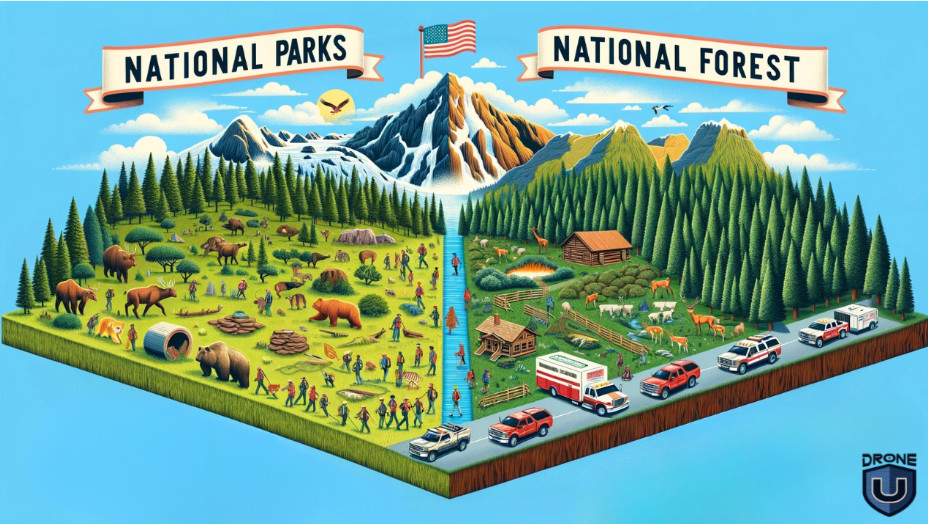Can You Fly A Drone In National Parks? No, the National Park Service (NPS) generally prohibits launching, landing, or operating drones within national park boundaries to protect wildlife, visitor experiences, and the natural soundscape. Understanding these regulations is crucial for all drone enthusiasts, and flyermedia.net offers the most up-to-date information to help you stay compliant. Explore the interplay between recreational drone use, federal aviation regulations, and conservation efforts.
Table of Contents
- National Parks: Drone Use is Prohibited
- The FILM Act and Drone Restrictions
- Drone Use for Scientific Studies in National Parks
- Additional Park Restrictions to Consider
- National Forests: Opportunities and Restrictions
- How Drone Regulations Differ: National Parks vs. National Forests
- Tips for Safe Drone Operation in Sensitive Areas
- Staying Informed and Practicing Responsible Drone Use
- FAQs: Drone Use in National Parks and Forests
1. National Parks: Drone Use is Prohibited
Is drone flying allowed in national parks? As a rule, drone use is prohibited in all national parks by the National Park Service (NPS). Instituted in 2014, this ban aims to safeguard wildlife, ensure visitor safety, and preserve the natural ambiance of these protected areas. Violators may face fines and have their equipment confiscated.
 Aerial view of a mountainous national park
Aerial view of a mountainous national park
Alt: Scenic aerial view of a national park landscape with mountains, trees, and a winding river.
This regulation means that recreational drone flights, aerial photography, and other drone-related activities are not permitted within park boundaries. The NPS prioritizes maintaining a peaceful and undisturbed environment for visitors and wildlife, which aligns with their conservation mission.
2. The FILM Act and Drone Restrictions
Does the FILM Act affect drone use in national parks? No, the recent legislative changes introduced by the FILM Act do not impact the prohibition of drone use. While the FILM Act, signed into law in January 2025, eases restrictions on small-scale filming activities in national parks, it specifically excludes drone operations.
The FILM Act allows small groups (fewer than six individuals) to engage in filming without obtaining a permit, provided they comply with park regulations and do not disrupt park resources or visitor experiences. However, the drone ban remains firmly in place to protect park resources and visitor experiences. This distinction highlights the NPS’s ongoing commitment to preserving the natural ambiance and protecting wildlife from potential disturbances caused by drones.
3. Drone Use for Scientific Studies in National Parks
Can drones be used for scientific research in national parks? Yes, with permission, the National Park Service may allow drone use for scientific studies in certain units. To gain this permission, you should first consult with the NPS Park Aviation Manager (PAM) and park research coordinators to ensure your project meets all UAS and related requirements. If needed, follow up with the Regional Aviation Manager (RAM).
This process ensures that any drone operations are conducted responsibly and in compliance with park policies. If you meet all requirements, you may be able to use drones to collect valuable data and contribute to scientific understanding of the park’s natural and cultural resources.
4. Additional Park Restrictions to Consider
Are there other park-specific restrictions drone users should be aware of? Yes, some national parks introduce additional measures to manage visitor impact, and it’s crucial to stay informed about these evolving policies. These may include reservation systems and air tour bans, impacting how drone operators plan their visits.
Consulting directly with the specific park you intend to visit is always advisable. Each park operates as its own entity, so regulations and permitting processes can vary. Visiting the National Park Service website provides specific rules about flying in a National Park, and contacting the Park directly addresses specific permit needs.
5. National Forests: Opportunities and Restrictions
Is it legal to fly a drone in national forests? Yes, drone use is generally permitted in national forests, subject to specific guidelines and regulations set by the U.S. Forest Service (USFS) and the Federal Aviation Administration (FAA). While national parks enforce a near-total ban, national forests offer more flexibility for drone enthusiasts.
Here’s a breakdown of the key considerations:
- Wilderness Areas: Drones are prohibited in Congressionally designated Wilderness Areas to maintain their pristine conditions.
- Temporary Restrictions: Certain areas may have temporary flight restrictions due to events like wildfires or wildlife nesting seasons.
- Local Regulations: Some National Forests may have additional rules or require permits for drone operations.
- FAA Regulations: Drone operators must adhere to all FAA regulations, including registration, airspace restrictions, and operating procedures.
For the most current and detailed information, it’s advisable to consult directly with the U.S. Forest Service or visit their official website.
6. How Drone Regulations Differ: National Parks vs. National Forests
What are the key differences between drone regulations in national parks and national forests? The rules for drone use in National Parks and National Forests in the United States differ significantly due to the differing management goals and policies of the National Park Service (NPS) and the U.S. Forest Service (USFS). The NPS prioritizes preservation and conservation, while the USFS balances recreation, conservation, and resource management.
 Comparison of drone regulations in national parks and forests
Comparison of drone regulations in national parks and forests
Alt: Side-by-side comparison of drone regulations in national parks and national forests, highlighting the stricter rules in parks.
Here’s a comparison of how the rules vary:
| Feature | National Parks (NPS) | National Forests (USFS) |
|---|---|---|
| General Policy | General prohibition on launching, landing, and operating drones | Generally allows drone use, subject to FAA regulations and USFS guidelines |
| Permits | Typically only allowed with special permits for scientific research, resource management, or administrative purposes | Special use authorization may be required for commercial drone operations or specific activities beyond recreational use |
| Enforcement and Penalties | Strict enforcement with significant penalties, including fines and legal action | Potential consequences for unauthorized drone use are generally less severe |
| Area Restrictions | Broader prohibition across the entire park | More specific restrictions related to certain areas (e.g., wilderness areas, near wildfires) or activities |
| Focus | Preservation of natural and cultural resources and unimpaired visitor enjoyment | Multiple-use mandate including recreation, conservation, and resource management |
7. Tips for Safe Drone Operation in Sensitive Areas
How can drone operators ensure safe and responsible flying in sensitive areas? Operating drones in sensitive areas like National Parks and National Forests requires careful consideration and adherence to specific safety guidelines to ensure both the protection of the environment and the enjoyment and safety of other visitors.
 Drone flying over a forest landscape
Drone flying over a forest landscape
Alt: Drone flying over a forest landscape with trees and mountains, emphasizing the need for responsible drone operation.
Here are some tips for safe drone operation in these areas:
- Know the Regulations: Before flying a drone, be aware of and understand the specific regulations of the area you’re in. National Parks generally prohibit drone use, while National Forests have more lenient rules but with certain restrictions. It’s important to note that each National Park operates as its own entity, so regulations and permitting processes can vary. Check out the National Park Service website for specific rules about flying in a National Park and contact the Park directly if you need a permit.
- Avoid Disturbing Wildlife: Drones can stress or scare wildlife, leading to negative impacts on their natural behavior and habitat. Keep a safe and respectful distance from animals.
- Respect Other Visitors: Be mindful of other people’s experiences in these natural settings. Avoid flying drones near other visitors, especially in quiet areas where people seek solitude and peace.
- Maintain Visual Line of Sight: Always keep your drone within your line of sight. This is the law and helps in avoiding unintended interactions with wildlife, people, or other aircraft.
- Be Aware of Environmental Conditions: Weather conditions can change rapidly in outdoor settings. Be aware of wind, temperature, and other environmental factors that can affect drone operation.
- Use Geo-Fencing If Available: Some drones come with geo-fencing capabilities that can help prevent them from entering restricted areas. Make use of these features to stay compliant with area regulations.
- Do Not Interfere with Emergency Operations: Never fly a drone near emergency response efforts, such as firefighting or search and rescue operations. Drones can severely hamper any efforts with these critical activities.
- Carry Identification and Registration: Have your drone registration and identification on hand in case you are approached by authorities or other individuals questioning your drone use.
8. Staying Informed and Practicing Responsible Drone Use
How can drone operators stay updated on changing regulations and ensure compliance? With new restrictions such as reservation systems and air tour bans in certain parks, drone operators should plan and remain vigilant about evolving policies. Staying informed and practicing responsible drone use ensures compliance and helps preserve the beauty of treasured landscapes.
Here are some steps drone operators can take:
- Regularly Check Official Websites: Monitor the NPS and USFS websites for updates on regulations and policies.
- Contact Park or Forest Authorities: Reach out to local park or forest offices for clarification on specific rules and restrictions.
- Join Drone Communities: Engage with online forums and communities to share information and stay informed about the latest developments.
- Attend Workshops and Training: Participate in workshops and training sessions focused on responsible drone operation and regulatory compliance.
9. FAQs: Drone Use in National Parks and Forests
Here are some frequently asked questions about drone use in National Parks and Forests:
- Is it legal to fly a drone in any national park?
- No, the National Park Service generally prohibits the launching, landing, or operation of drones within national park boundaries.
- Can I get a permit to fly a drone in a national park?
- Special permits may be granted for scientific research, resource management, or administrative purposes. Contact the specific park for details.
- Are there any exceptions to the drone ban in national parks?
- Exceptions are rare and typically limited to authorized scientific or administrative activities with proper permits.
- What are the penalties for flying a drone in a national park without permission?
- Violators may face fines and have their equipment confiscated.
- Is it legal to fly a drone in a national forest?
- Yes, drone use is generally permitted in national forests, subject to specific guidelines and FAA regulations.
- Are there any restrictions on drone use in national forests?
- Restrictions may apply in wilderness areas, near wildfires, or during wildlife nesting seasons. Check local regulations.
- Do I need a permit to fly a drone in a national forest?
- A special use authorization may be required for commercial drone operations or specific activities beyond recreational use.
- How can I find out about temporary flight restrictions in national forests?
- Consult the USFS website or contact the local forest office for up-to-date information.
- What should I do if I see someone flying a drone illegally in a national park or forest?
- Report the incident to park or forest authorities, providing as much detail as possible.
- Where can I find more information about drone regulations in the US?
- Visit the FAA website for federal regulations and the NPS and USFS websites for park-specific and forest-specific rules. Also, flyermedia.net offers comprehensive guides and updates.
Looking for more detailed information on drone regulations, flight training, and aviation news? Visit flyermedia.net today to explore our extensive resources and connect with a community of aviation enthusiasts! Discover pilot training programs, in-depth articles, and the latest industry updates to fuel your passion for flight.
Address: 600 S Clyde Morris Blvd, Daytona Beach, FL 32114, United States
Phone: +1 (386) 226-6000
Website: flyermedia.net